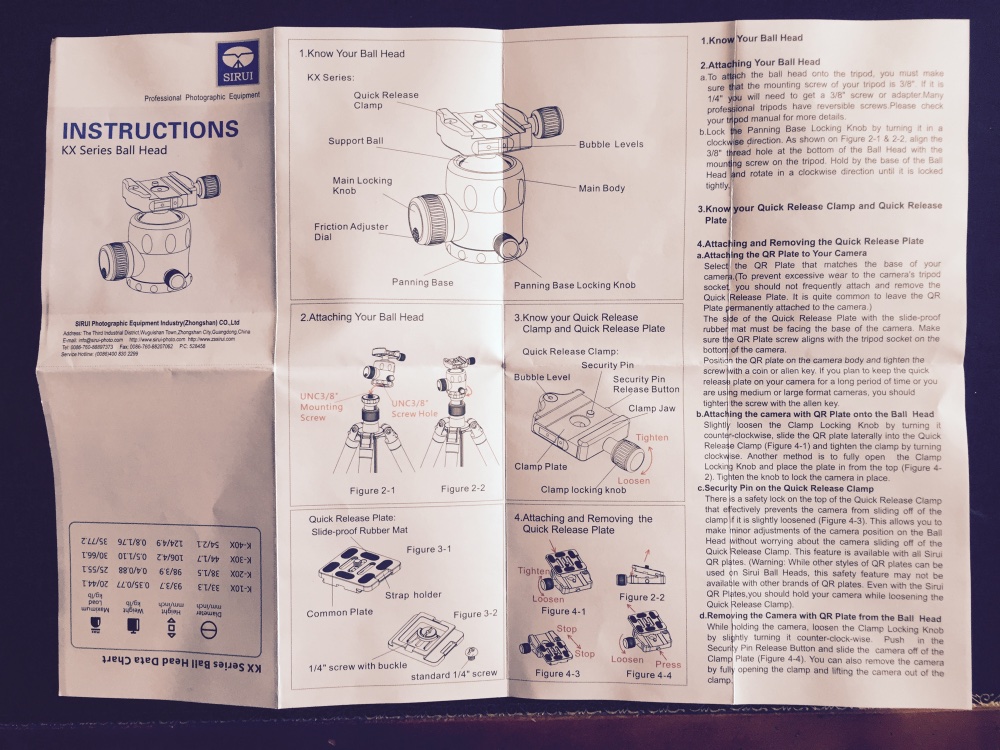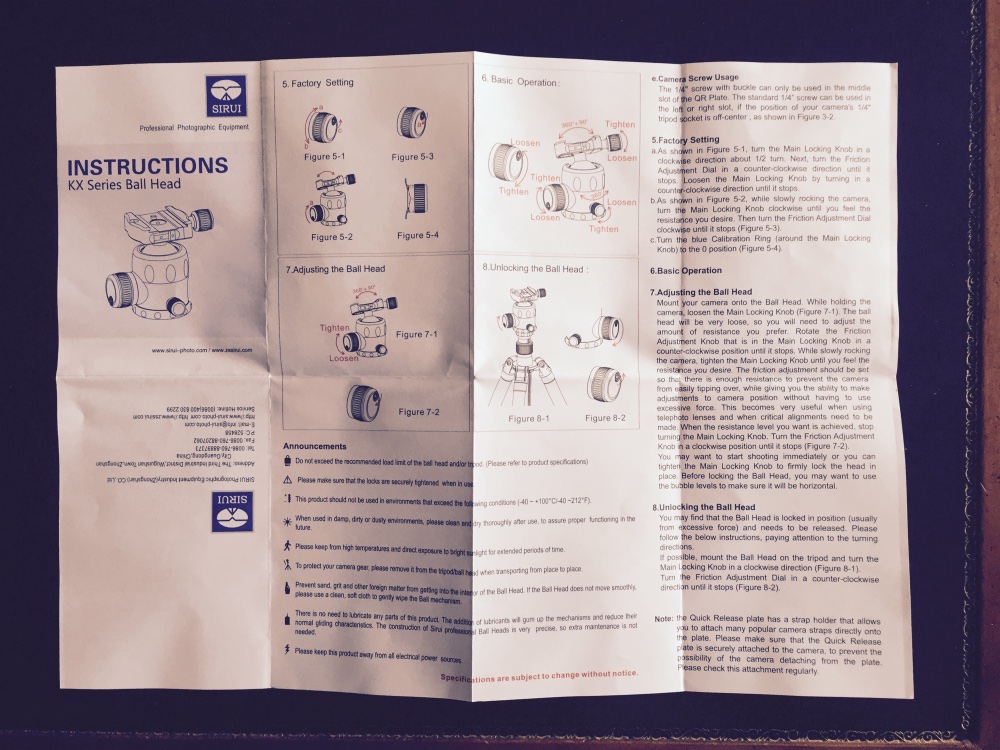A cheap knock-off, well made.
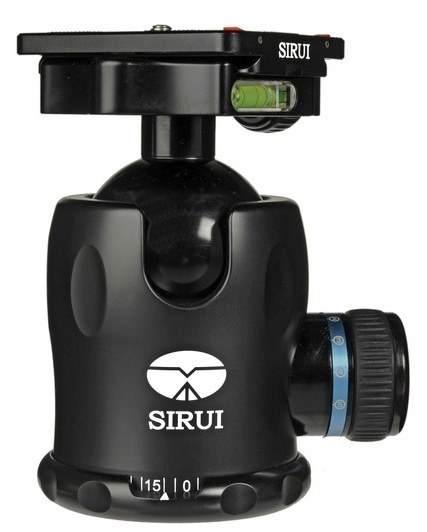
My recent night-time efforts with the Nikon D3x, the 35mm Sigma and the old Linhof tripod in Carmel produced one or two nice snaps but far more in the way of garage language. You see, my old Manfrotto QR plate and jolly, colored Novoflex ball head just could not reliably handle the weight of the camera and lens, the poor ball head protesting that this really was not its role in life.
So I did a spot of research and had pretty much settled on the Arca Swiss Z ball head and related QR plate, a non-trivial $450 with spare plate, when DP Review published a thoughtful review of a bunch of big ball heads, accompanied with excellent test measurements. The Arca was among those tested, and comparison with the $214 Sirui (with spare QR plate) disclosed that the latter was pretty much a Chinese knock-off at less than half the price. Having discounted the American Acratech, whose funky design I concluded was trying too hard to be different for no obvious benefit, I went ahead and joined the lottery, ordering a Sirui from B&H, hoping I would luck out with a good one. The Sirui improves on the Arca Swiss (made in Beijing, for all I know) with more bubble levels – all useless – and a properly calibrated pan base, compared with the dots passing as calibrations on the Arca Swiss. Has anyone at Arca actually tried to use these? With a spare QR plate the Sirui was a bargain and if I got a good one the six-year warranty would make me feel good though it’s likely as useless as those spirit levels. Spare plates are a total rip-off, by the way. Sirui gets $48 for theirs, others charge even more, for a simple machined piece of metal.
Anyway, it seems I lucked out. I had none of the issues noted by DPReview with their sample which had crooked spirit levels and poor rubber sheathing on the locking knob. The QC tag in the box is dated 8/24/2013, so it’s a fairly recent one. The head is beautifully made, no machining marks anywhere, heavy-duty if not too heavy at 18 ozs., and comes with excellent English instruction, probably a first for any Chinese marketed product in the US. I mean, they are written in real, idiomatic, grammatically correct English. By ‘heavy duty’ I mean you do not have to tighten the locking knob at all hard to really lock down a heavy piece of gear safely. The friction adjuster’s use is well explained and while it does allow the presetting of friction so the camera does not flop about on the head when the release knob is loosened, this tends to vary quite a bit with ambient temperature, so use with care. There’s a neat QR button for the QR head which means you only need loosen the QR plate retaining knob a tad, press the button and slide the camera off. Alternatively, you can unscrew the retaining knob completely – four turns, when it locks – and simply lift the camera out vertically as the retaining dovetail grooves are fully separated at that point. This is poor design as the thread pitch of the knob is far too fine, defeating the QR concept. Two turns would have been a nice compromise between safety and speed.
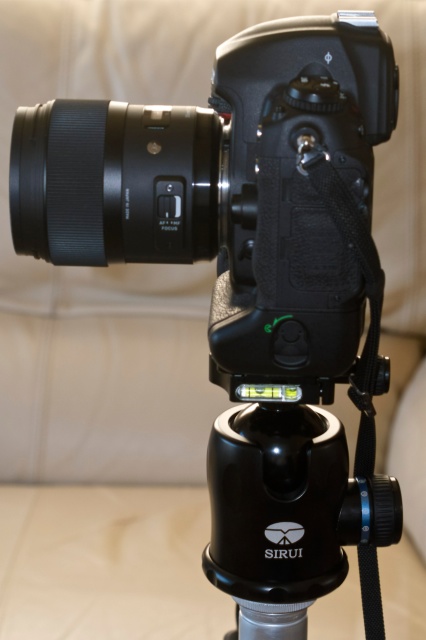
Ball head with the D3x and Sigma 35mm f/1.4
on my ancient Linhof tripod.
The design of the ‘industry standard’ Arca plate is sub-optimal. So much for standards. Engagement, whether sliding the camera in – retaining screw released half a turn – or dropping it in – retaining screw released four turns – is far too fussy as regards placement. The earlier Manfrotto is superior in every way here. Still, I suppose I’ll get used to it, fiddling with the bloody camera until I can get the grooves on the plate and head to align just so. A disappointment. No QR device should need anything other than feel – certainly not sight – to operate and this design fails the test of ease of use. At night on a poorly lit street I’m not about to crouch down and try to see that I am properly mating two black matte pieces of metal ….
The ball head itself uses the meatier 3/8″ female screw thread for tripod attachment, which is a good thing. The Arca plate provided with the head has three slots and comes with two 1/4″ retaining screws. One has a fold out arc to allow finger tightening, but mine immediately fell off as the retaining pin had not been installed correctly. No matter, as there is both an Allen socket in the screw and a transverse slot which will fit a flat-bladed screwdriver or small coin. An Allen wrench is provided but this is simply an awful idea, for you can bet the one time you will need it on the road you will have left it at home. It is also an invitation to the ham-handed to over-torque the retaining screw. The straight slot works with a US cent or dime just fine, and it’s not likely you will be without either. The screw with the fold-out arc has too large a diameter base, meaning it will only fit in the center one of the three slots in the plate. Had Surui bothered to make it a couple of millimeters smaller all would be fine. To their credit (?) they mention this in the instructions and advocate use of the smaller allen screw if either of the two other channels is to be used. This smaller head screw also comes with a screwdriver/coin slot. OK, a good save, but the wrong answer.
By contrast, the spare plate I ordered is of a different design. It comes with one slot only and with the fold out arc screw only, as well as with an Allen wrench. Interestingly it has two small fold up red plastic tabs which can act as a limit device for some cameras where the baseplate will abut the raised tabs. Think of these as anti-twist devices. Not so good for my big Nikons with their rounded-edge baseplates, but a nice idea. This plate resides full-time on my D3x as the fold out arc on the retaining screw has yet to break off and I like the idea of tool-free installation and removal; the stock plate resides full-time on my 500mm Reflex Nikkor. If it helps, the stock 3-slot plate is designated TY-70X, while the single slot spare with the red tabs is TY-70-2.
Here’s the TY-70-2 spare plate on the D3x – I prefer transverse attachment rather than having the plate protrude front and back of the camera’s baseplate. You can see the fold out tabs, the allen head and the screwdriver slot below. The red tabs in longitudinal orientation can be folded up to protrude from the top of the plate allowing certain cameras to abut them.
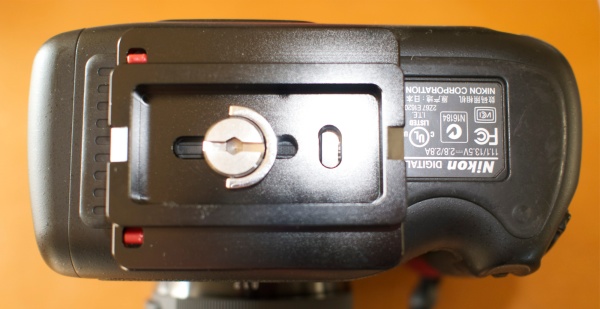
Sirui has a large selection of QR plates which you can see here. There are many camera specific ones, shaped to fit the baseplate, with versions for the D700, D800, and a host of Canon bodies, if nothing for the D2/3/4 Nikons.
Finally, the panning base is a welcome feature, well indexed in degrees of rotation. The grease used here is heavy and makes for just the right degree of resistance with a heavy camera body and lens. Friction is not adjustable for this function. I have had no issues using the camera vertically via the drop slot in the ball head. Make sure the slot is aligned with a tripod leg and there’s no risk of the rig tipping over.
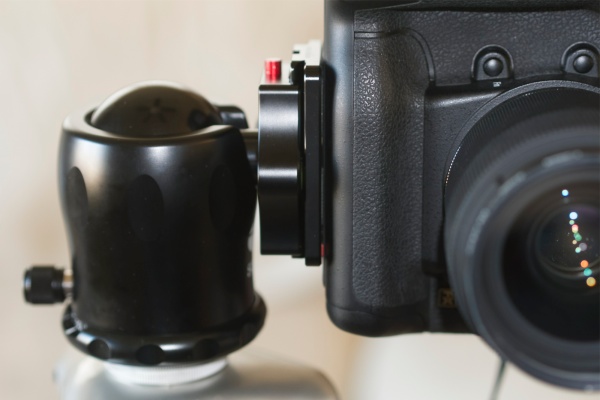
The vertical slot in use. No clearance issues.
A very nice neoprene pouch comes with the head and, as you will never use it, it makes for a fine lens pouch with proper drawstrings with movement lockers. Handy.
I am the worst possible source to look to for comments on longevity, as tripod use is largely anathema to this street snapper. If I use a tripod a dozen times annually that’s a lot. Thus I will not be able to comment on meaningful, hard use in harsh environments, as I will be doing neither. However, if you are looking for what appears to be a bargain, are prepared to maybe have to exchange the first one or two (this is beginning to sound like a Sigma lens review) and use heavy gear needing a solid head, the Sirui deserves consideration. For me the sweetest part is that I sold my old Novoflex head for what the Sirui cost me!
Some test data:
The D3x is most susceptible to camera shake on a tripod at 1/15th second exposure time. The reason is that the vibrations caused by the slap from the rising mirror are present for a significant percentage of the exposure time. Shorter shutter speeds obviate the issue while longer ones make the percentage smaller with the same positive result. So using 1/15th with the D3x is an iffy proposition if maximum resolution is aimed at. One way to avoid this is by using Mirror Lock Up and a wireless remote to trigger the shutter, with the first press raising the mirror and the second releasing the shutter.
Thus I set up the camera on the tripod taking snaps of the mesh window screen at 1/250 and 1/15th – depth of field obviously varies, but the mesh screen is a very critical indicator of camera shake. Here are the results using MLU, with a 5 second pause after mirror up before wireless release. These enlargements would yield 48″ prints:
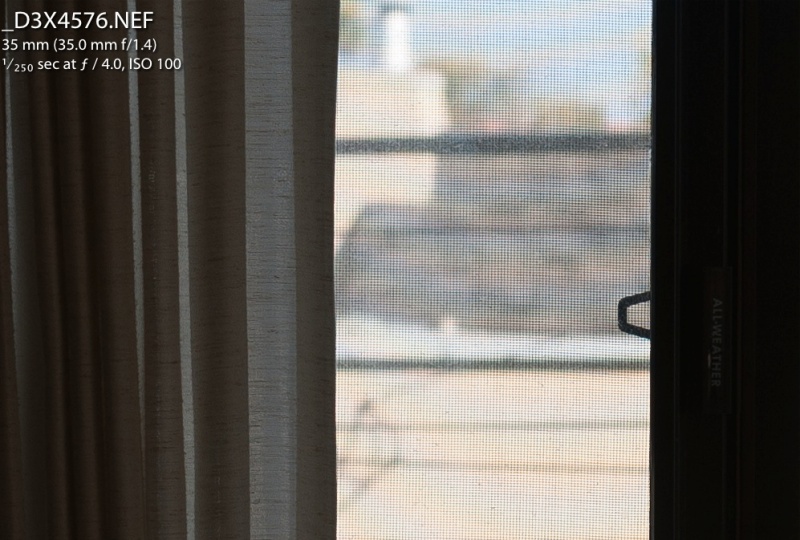
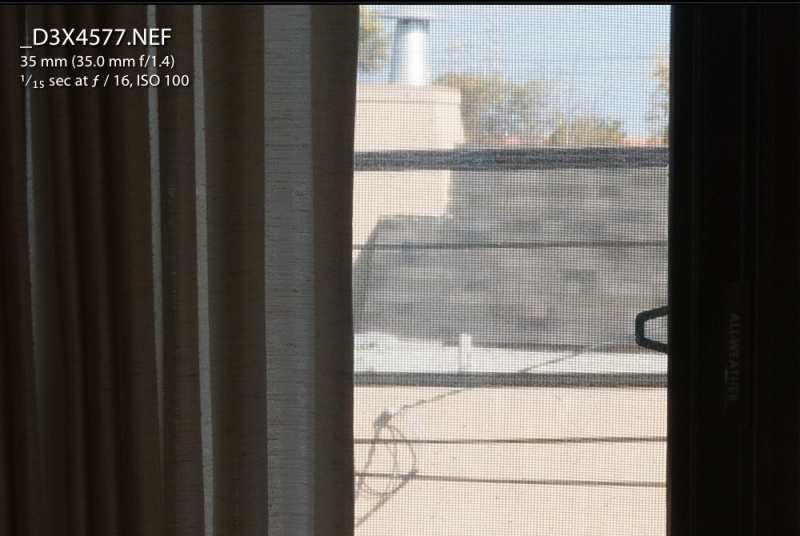
Magnified on my display there is no difference, suggesting the Sirui + Linhof + wireless remote are doing their job.
For results from a successful field trip, click here.
Update May 24, 2015:
A reader who has lost his manual wrote that it’s nowhere to be found on the web, so I append images below:
